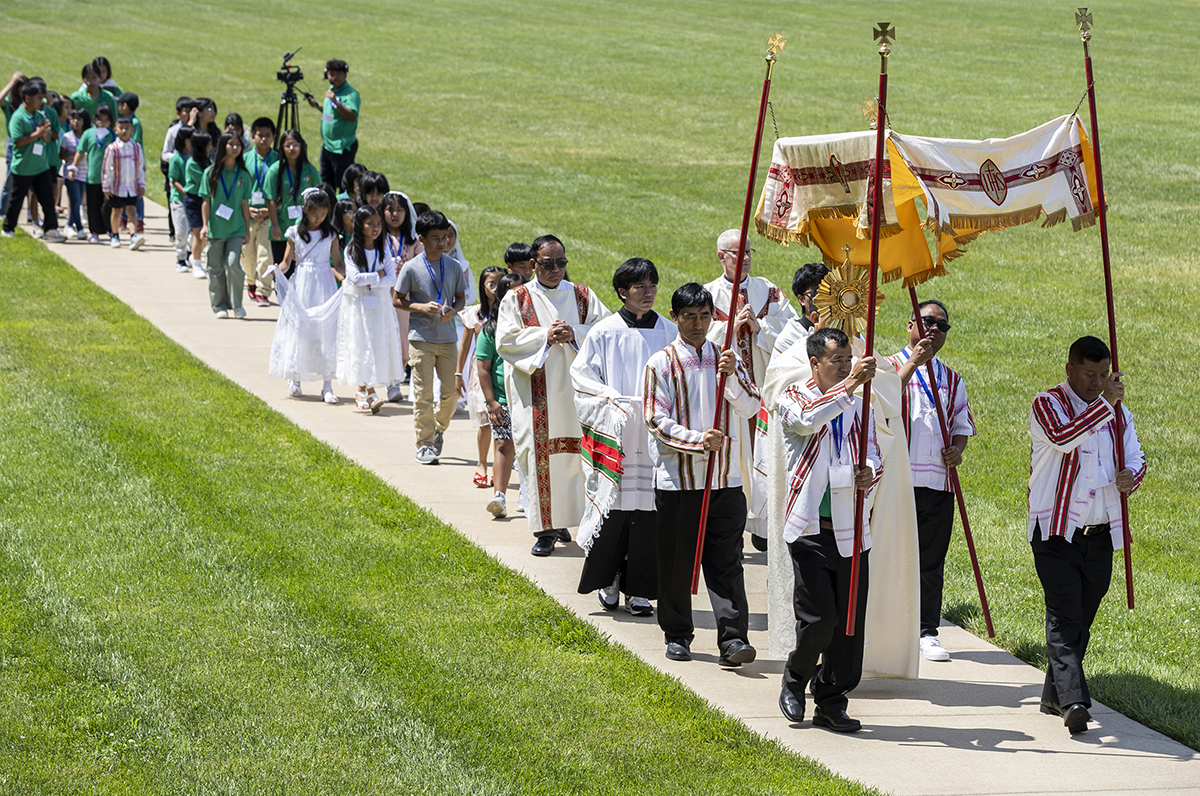New study says 69% of Massgoers believe in Real Presence

Regular Mass attendance called a factor in determining an individual’s belief in the Real Presence
A new study suggests that Catholic belief in the Real Presence may be higher than previous data indicated — but measuring that belief accurately remains a tricky task for researchers.
Regular Mass attendance, however, has emerged as a key factor in determining an individual’s belief in the Real Presence.
On June 3, Vinea Research, a Maryland-based market research firm that focuses on the Catholic Church in the U.S., released “Do Catholics Truly Believe in the Real Presence?” — which concluded that 69% of Mass-going Catholics believe in the Real Presence of Jesus in the Eucharist. Higher levels of belief correlated with more frequent Mass attendance, Vinea found.
Vinea’s seven-page report revisited a landmark 2019 survey by Pew Research that found only 31% of Catholics in the U.S. believed that “during Catholic Mass, the bread and wine actually become the body and blood of Jesus.”
Yet the wording of Pew’s question was problematic, as were the response options, said Vinea founder and president Hans Plate, who has extensive experience in conducting market research for pharmaceutical and health care industries.
The Pew study “actually gave (survey participants) two responses that were both partially correct,” Plate said.
Pew had posed two questions — one knowledge-based, the other belief-oriented — about the Eucharist. In the first, Pew had asked respondents, “Which of the following best describes Catholic teaching about the bread and wine used for Communion?” and asked them to select if the bread and wine “actually become the body and blood of Jesus Christ” or “are symbols of the body and blood of Jesus Christ.” A percentage of the survey takers indicated they were not sure (10%) or had no answer (1%).
In the second question, Pew asked, “Regardless of the official teaching of the Catholic Church, what do you personally believe about the bread and wine used for Communion?” with participants replying that during the Mass, the bread and wine “actually become the body and blood of Jesus Christ” or “are symbols of the body and blood of Jesus Christ.”
Plate said the questions needed to be phrased to better align with Catholic teaching, which — as Jesuit Father Thomas Gaunt, executive director of the Center for Applied Research in the Apostolate, said — holds that the bread and wine are “true Presence and symbol at the same time.”
“All sacraments are symbols,” said Father Gaunt, whose organization teamed up with the McGrath Institute for Church Life at the University of Notre Dame for a 2022 national survey on eucharistic belief among adult Catholics in the U.S.
That CARA/McGrath Institute report — which found 64% of respondents expressed belief in the Real Presence, with Mass attendance proving significant in positive responses — used questions that “better expressed the Church’s teachings around Real Presence and transubstantiation,” wrote McGrath’s associate director for research Timothy O’Malley in an October 2023 commentary.
Vinea’s rewrite of the Pew questions rendered the options for both the knowledge-based and belief questions as “Jesus Christ is truly present in the bread and wine of the Eucharist,” “Bread and wine are symbols of Jesus, but Jesus is not truly present,” or “Not sure.”
The Vinea study split its sample of over 2,000 Catholics — defined as age 18 or older, who attended Mass “at least once,” Plate said, on a basis ranging from “seldom” to “a few times wa year” to “more than once a week” — and administered Pew’s language to half, with the remaining half answering Vinea’s revised questions.
Father Gaunt said the Vinea study “is confirming pretty much what we found” in the McGrath-CARA study.
“They highlighted again that the issue is the way Pew phrased the question was not clear enough,” said Father Gaunt. “And so when you correct for that, you get a very different response rate.”







